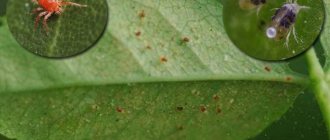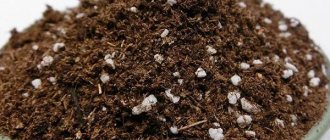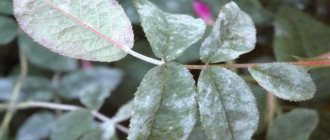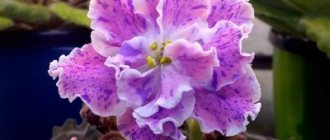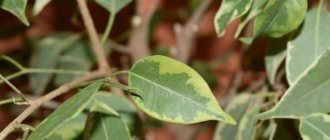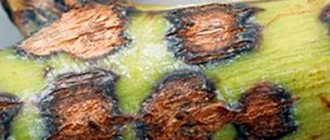Types of powdery mildew, prevention and treatment methods
Downy and true powdery mildew are common causes of death of indoor violets. Both diseases are fungal in nature. In the case of powdery mildew, the causative agent is powdery mildew (Erysiphales). Downy mildew is caused by Peronosporaceae fungi, a family of Peronosporaceae.
Powdery mildew
Powdery mildew
You can understand that a violet is sick with powdery mildew at the initial stage of the disease. A light coating of white on the leaves and petioles should alert you. It looks like the plant has been lightly dusted with flour. The progression of the disease is accompanied by damage to all parts of the plant by ulcers. The leaf surface becomes uneven.
Trending Wisteria for the middle zone: dreams come true!
At the final stage, there is a general depression of the violet: it stops growing, weakens, and dies. There are many causes of powdery mildew infection. Most often, the fungus multiplies on flower plants that are weakened due to poor care. Powdery mildew is caused by excess nitrogen in the soil. Possible routes of infection:
- from another diseased plant;
- fungus-infected soil;
- a dirty, contaminated instrument used for transplanting and propagation.
Treatment
At the first signs of illness, begin treating the diseased violet. First, inspect the flower, pinch off all damaged leaves. Treat the soil and leaves with a fungicide. Fundozol and Topaz are suitable for processing violets. These fungicides do not damage delicate leaves; the spray solution should be slightly warm. Place the violet in a warm, dark place. Keep it in the dark until completely dry. This measure will prevent sunburn on the leaves.
Prevention
Monitor the balance of nitrogen, potassium and phosphorus in the soil. Use fertilizers with a high percentage of potassium and phosphorus to feed the flower. Before transplanting (planting) violets, treat the soil with a fungicide:
- Previkur;
- Infinito;
- Thanos.
Downy mildew
Downy mildew
Treatment and preventive measures are the same as for powdery mildew. Signs of the disease differ:
- the first stage is a silvery or white coating on the bottom of the leaf blade;
- second stage - spots on the upper surface of the leaves, the color of the spots is light green, brown, reddish;
- third stage - if left untreated, the flower dies.
Important to remember! High humidity accelerates the course of the disease and promotes the spread of downy mildew.
Diseases of violets
Basically, Saintpaulia diseases can be divided into infectious and non-infectious. They have completely different natures of origin with similar external signs - loss of rosette turgor, rotting of leaves, death of the root system, the appearance of spots on leaf blades, etc. And if non-infectious rot is caused by physiological reasons (violation of agricultural technology), then infectious diseases in Saintpaulia are caused by dangerous pathogenic microorganisms (fungi, bacteria and viruses).
All infectious diseases of violets can be combined into several large groups:
Fungal diseases
Pathogenic fungi that cause root rot include fungi of the genus Fusarium, Botridis, Pythium, Rhizoctonia, Phytophthora, etc. Many types of pathogenic fungi are present in ordinary soil in the form of spores and begin to manifest themselves only when conditions favorable to them arise.
Fusarium
The active reproduction of fungal spores of the genus Fusarium is facilitated by a decrease in room temperature with a simultaneous increase in air humidity and waterlogging of the substrate in which the violet is located. The disease manifests itself in wilting and subsequent rotting of the above-ground part of the plant, which occurs as a result of damage and death of the root system.
In this case, the fungus penetrates gradually through the slightest damage to the root tips, even with a temporary violation of the plant’s maintenance conditions. As the plant's conducting system is damaged, the petioles of the rosette soften, turn brown and fall off the stem.
Periodic watering of violets with foundationazole in low concentration reduces the risk of fusarium disease. It is possible to save the affected plant only by re-rooting the upper part of the rosette, which has not yet been affected by the disease. If the conducting system is completely affected, then you can try to grow a new Saintpaulia from a cutting, leaf blade or the remaining healthy part of the leaf.
Blackleg
This disease is caused by a fungus of the genus Pythium when Saintpaulias are constantly flooded and planted in too acidic/heavy or, on the contrary, too dry/sandy soil. A constriction with a whitish coating around it appears on the basal stem of the rosette, which after a while turns brown and begins to rot. As a result, the leaves of the rosette turn yellow, and the entire above-ground part of the plant withers and dies.
As a preventive measure, it is recommended to treat young violets with benlate or a similar systemic fungicide intended to protect plants from fungal diseases.
Late blight
Late blight occurs when Saintpaulia is infected with the late blight fungus. Unlike other infectious diseases, late blight does not depend on violations of agricultural practices and penetrates the plant through intact tissues - root hairs, open stomata of leaf blades, and the pistil of a flower. Once in living and healthy tissues, the fungus kills plant cells, capturing more and more undamaged areas.
The disease spreads very quickly, affecting the entire conducting system, which leads to almost immediate death of the plant. All areas affected by late blight are susceptible to rotting - roots, leaves, peduncles. Fortunately for Saintpaulia lovers, this disease does not occur so often, since it is impossible to save a diseased plant.
Powdery mildew (downy mildew)
Powdery mildew (downy mildew) mainly affects peduncles, petioles and leaves of Saintpaulia. A white powdery coating appears on the surface of these parts of the plant (see photo), which is quite difficult to remove. This species-specific fungal disease usually occurs at low room temperatures, winter drafts and high air humidity (a cold window sill in winter and “crying” window panes especially provoke the appearance of a fungal infection).
Treatment of a diseased violet involves treating the rosette with disubstituted sodium phosphate in a proportion of 1 gram per 1 liter of boiled water. In this case, in addition to proper treatment, Saintpaulia also receives a small phosphorus supplement.
Also, foundationazole and other antifungal drugs (topaz, saprol, bytleton) are used to treat the aboveground part of the plant and the spillage of the earthen coma. To dust the affected parts of the plant, you can use crushed colloidal sulfur. But we must remember that the effect of dusting with sulfur powder is achieved at air temperatures above +23C.
Rust
The disease is caused by the presence of pathogenic spores of the rust fungus on the plant. This mainly happens with the onset of spring - in dry and warm weather. Rust affects the upper and lower surfaces of leaf plates. Yellow spots and dots appear on the upper surface, and orange-brown tubercles appear on the lower surface. The leaf affected by the fungus gradually turns yellow and dries up on the rosette.
When treating this fungal disease, it is necessary to remove and destroy all leaves affected by the fungus, and thoroughly spray the rosette with benomyl, Bayleton, Tilt or preparations of similar action. If the plant is severely damaged by rust, it becomes impossible to save it. It is better to destroy the diseased violet, and treat the pot and the surface where the infected violet was located with a fungicide solution.
Gray rot
Gray mold is caused by spores of the pathogenic fungus Botridis. They form a fluffy coating of grayish-brown color on various parts of the rosette. Plaque can be found on leaf blades, on peduncles, on buds/flowers, and on the stem of the rosette. As a rule, spores of the botridis fungus are common inhabitants of the soil, which includes any plant debris.
When the plant’s immunity is weakened and conditions favorable for the development of spores arise (waterlogging of the soil, a decrease in room temperature and air humidity), the fungus instantly becomes active, quickly spreads and affects not only one specific violet, but also all nearby Saintpaulias.
Treating the affected plant with systemic fungicides does not always help with gray mold disease. In some cases, it is better to throw away such a plant along with the soil.
As preventive measures, you can use periodic spilling of the soil in the pot with a weak solution of potassium permanganate, foundationazole or other fungicides, as well as pre-treatment of the soil before planting by calcination at high temperatures (many types of fungal infections are not affected by standard freezing in the refrigerator, since low temperatures have no effect influence on fungal spores).
Bacterial diseases
Along with fungal infections, Saintpaulias are also susceptible to bacterial diseases. They can appear independently, or they can accompany various fungal rots. As a rule, high humidity and high indoor temperatures lead to bacterial infections of violets. Bacteria enter through small wounds, breaks, cuts and other physical damage. Bacteria are able to multiply quickly, spreading throughout the plant's entire conducting system.
Symptoms of a bacterial disease appear in the form of watery and translucent spots on the leaves, which have a rather unpleasant odor. Also, bacterial infections can occur with excessive watering and a corresponding increase in the wateriness of the green mass of the rosette, with a lack of phosphorus, potassium and microelements with a simultaneous excess of nitrogen in the plant’s nutrition.
Viral diseases
The origin and causes of Saintpaulia viral diseases have not yet been sufficiently studied and are poorly described. Therefore, viral causes of diseases generally include all those diseases that were not caused by fungus, bacteria or plant pests.
Viral diseases can manifest themselves in leaf deformation, spontaneous disappearance of the violet growing point, the appearance of yellow mosaic spots on leaf blades, disturbances in the normal development of peduncles and buds, in the form of spontaneous variegation, etc. Typically, a viral disease affects a single Saintpaulia plant without spreading to the rest of the plants in the collection.
Also, a viral disease does not always lead to the death of Saintpaulia. For example, when mosaic spots or spontaneous variegation occurs, the virus affects only part of the trunk and rosette - individual leaf cuttings. All subsequent rows of leaves, as a rule, grow completely normal and healthy. This violet requires neither treatment nor re-rooting.
But Saintpaulia with gnarled, thickened and deformed leaves, degenerative stepsons, and a missing growing point can be safely thrown away. There is no point in treating or restoring such a plant from cuttings, since all parts of Saintpaulia are already affected by the virus.
Sometimes laboratory tests may be required to accurately diagnose a diseased violet. It is almost impossible to do this at home. Therefore, to treat plants, flower growers use targeted or broad-spectrum drugs. And for preventive purposes, it is desirable to prevent or eliminate as quickly as possible agrotechnical shortcomings in the maintenance of Saintpaulias. Timely care and proper living conditions are the best prevention of infectious and non-infectious diseases of Uzambara violets.
Rust
Rust
You can lose your favorite violet due to the fungus Phragmidium, which causes rust - a dangerous disease of indoor plants. This disease should be recognized and treated in the early stages. The likelihood of violets becoming infected with rust is higher during the winter-spring transition period. Lack of sunlight, reduced immunity for this reason, and the presence of fungus in the apartment are the main causes of rust.
Signs of rust are clearly visible in the photo. Yellowish spots appear on the outer surface. Turning the leaf over, you can see yellow pustules - colonies of the fungus. When pustules rupture, fungal spores spread throughout the room and infect other plants. Having discovered signs of rust on your violet, you need to begin emergency treatment of the flower:
- remove and destroy leaves affected by the fungus;
- isolate the flower from other indoor plants;
- treat the leaves with a fungicide.
Help against rust: “Fitosporin-M”, “Baktofit”, “Topaz”. If the form is advanced, treatment may not help. In this case, destroy the plant and discard the flower pot.
Dangerous pests of Saintpaulia
Scale insects are dangerous because they deform violet leaves. Brown or red spots remain at the sites of their bites . The female of this insect can be seen on an earthen coma, as if she is covered with transparent white fluff. Pests live in the folds and axils of leaves, on peduncles. If you find a shaggy louse on a violet, then you need to treat the flower with the following means:
- Phytofarm;
- Aktaroy;
- Actellicom.
For preventive purposes, when planting plants, you should put basadine in the pots .
Small thrips can also spoil violets. These white pests fall on the flower from brought plants or poplar fluff. They infect stamens and anthers, actively moving throughout the plant. To combat them, you can use Akarin, Vertimek, Agravertin and Dantop.
Quite often, Saintpaulias are affected by aphids, which are translucent insects of black, green or reddish hue. Aphids can be seen on viola growing points and leaves. Because of these pests, young shoots die. To get rid of them, the violet should be sprayed with a solution obtained from laundry or insecticidal soap. In addition, you can treat it with tobacco infusion or place lacewings or ladybugs on the flower. If there are too many aphid colonies on the plant, then it is better to use insecticides.
Violets are also attacked by different types of mites:
- Red spider. It leaves behind red spots surrounded by cobwebs, causing the leaves to change shape and dry out.
- Cyclamen. This pest can be seen on young leaves located in the middle of the rosette, leaving yellow dots on them.
- Cobwebby. This mite infects the outer leaves of violets, causing brown sunken spots to appear on them.
If these insects are detected, the flower should be treated with phytoverm, acarin or actellik.
Root rot
Root rot
Alarm signal - the violet does not bloom. It can be assumed that a violet has root rot if, with a damp substrate, the lower leaves of the flower, which have lost their elasticity, are flaccid, and the petioles are soft to the touch. The cause of violet root rot is fungi (phytopthora, pythium), and their active reproduction is provoked by the incorrect content of the flower, to be more precise:
- lack of drainage hole in the pot, excessive watering;
- poor quality soil (taken from the garden);
- cooling the soil in the pot;
- abundant watering on dry soil.
According to statistics, 75% of all violet diseases are root rot. To avoid this unpleasant disease, take the advice of experienced gardeners as a rule - water in small portions in case of violet transplantation and after a forced long drought. Water every few days until the plant adapts after the stress it has suffered.
If you suspect root rot in your violet, do not hesitate, start resuscitating your favorite flower. First of all, remove it from the pot and inspect the roots. The absence of white roots confirms the diagnosis. The next step is to remove the lower leaves and cut off the root part. If there are brown spots on the stem cut, cut the stem higher. The stem that is not damaged by rot has a purple tint. If the entire stem is damaged by rot, destroy the plant.
When we reach the healthy part of the stem, remove the lower 1-1.5 cm of leaves, spray with fungicide, leave to lie for 30 minutes and place in a substrate (vermiculite, water, soil) to form new roots. It is better to use moistened vermiculite and put a transparent bag on top of the flower. Take the container with the flower to a cool room and use a fluorescent lamp for illumination. After new roots appear, plant the violet in a new pot filled with soil.
Untimely transplant
E
If the plant has brown or brown spots located on the lower leaves, then the violet needs to be replanted.
Brown and brown formations indicate that the soil has become alkaline. The transplant is carried out as follows:
- It is necessary to carefully remove the flower from the pot so as not to damage the root system.
- Clean the roots from old soil.
- Affected leaves should be cut off. The cut areas are treated with charcoal.
- Plant the plant in a new pot and soil. Compared to the previous pot, the current one should be twice as large. For violets, special nutritious soil is suitable, to which drainage should be added. It is best to use sphagnum moss as drainage. Fresh soil should not contain phosphorus. This element leads to early aging of the flower.
Bacteriosis
Bacteriosis
At the height of the summer heat, many gardeners begin to die of violets from bacteriosis. It is almost impossible to save flowers. Signs of violet bacteriosis:
- the appearance of brown spots on stems, petioles, leaves;
- the leaves, starting from the bottom, change color, becoming dark;
- the leaf tissues soften and the flower dies.
Diseased flowers die quickly (from 2 to 30 days), the disease can spread to other plants. More often, violets suffer from bacteriosis from careless flower growers, who either dry out or flood poor plants. The most critical month for bacteriosis is July. In the heat, violets need to be shaded from the sun, when leaving to rest, organize wick watering. In spring, replant violets into pots with new soil mixture. At the beginning of summer, treat violets with Epin.
Violet disease - vascular bacteriosis: video
Causes of spots
Correct diagnosis and timely competent intervention will help eliminate leaf disease and save the flower. Depending on the type of disease, the spots differ in color, which determines the necessary control and further prevention measures.
Brown
Brown spots on violet leaves are most often the result of excessive lighting, in particular direct exposure to sunlight. At first they may have a beige tint, which darkens after a while. If nothing is done, a hole will form in the center of such a round spot.
To be sure that this is sunburn, you should pay attention to what part of the leaf plate is covered with brown areas - the side facing the glass can suffer so much that even the inflorescences burn out.
Another reason why there are brown spots with a brown tint on violet leaves is that the alkali content in the soil has greatly increased, and it is not at all suitable for the flower. This problem can only be solved by replanting, while thoroughly cleaning the root system of the plants.
The most dangerous situation is if brown spots appear on the Saintpaulia and cover large areas at once, and a grayish-white coating forms on the villi. This indicates that the violet has been infected with fungal and putrefactive diseases, which are difficult to combat. It is often almost impossible to save such a flower. Affected leaves with mycosis are completely removed.
Yellow
Violets are sensitive plants, and even drafts can make them feel unwell. They are the main reason when answering the question of where the yellow spots formed on the leaves of the flower. They often have the most unexpected shape and a yellowish tint.
Draft spots do not pose a particular threat; it is enough to move the pots with violets to a safer place, remove the affected leaves and wait for new ones to grow.
Belykh
The biggest problem arises when white spots in the form of a thin coating are found on the violet leaves, which are easily scraped off. This symptom signals that the plant is infected with fungi, most often powdery mildew, resulting in a high risk of flower death.
Infection occurs in several ways:
- Together with new soil, especially if garden soil is used for replanting, and not specially treated soil from the store.
- A lack of potassium makes the plant unable to resist fungal diseases and increases the risk of infection.
- The risk of infection greatly increases in conditions of high humidity, which is an excellent breeding ground for fungus, especially if the amount of nitrogen in the soil is exceeded.
Getting rid of fungus is difficult. The process involves several radical steps and a lot of time. In this case, the weakened plant becomes an object for attack by rot, mold, and insects. Therefore, all gardeners point out that the main remedy for powdery mildew is preventing its occurrence.
Black
If Saintpaulia becomes covered with black spots, then this indicates one thing - the fungal disease has penetrated so deeply into the structure of the leaf that it has begun to die. You can try to save the flower using a number of complex radical methods, but this guarantees a positive result.
Burns and rust on leaves
Sunburn and rusty deposits in the form of red pellets are similar. They can only be distinguished upon careful examination.
If the source of the first reason is clear, then the second is the plant’s reaction to excessive watering with hard water. Such symptoms do not pose a particular threat to violets, and they are easy to eliminate.
Pests of violets
Leaves, buds, and petioles of violets need to be inspected regularly. Especially in spring and summer, when the windows are open for ventilation. Be mindful of insect pests when purchasing a new potted plant from a flower shop and when decorating your home with cut flowers. It doesn’t matter whether they were cut in your own garden or in an industrial greenhouse. With flowers and soil for air transplanting, there is a chance of pests getting into your blooming violets. The most common aphid pests are:
- Mites (flat beetles, cyclamen, spider mites).
- Scale insect (false scale).
- Nematodes.
- Thrips.
- Aphid.
- Mealybug.
There are many pests that parasitize violets. Photos of insects and violets damaged by them will help to identify the parasite in time and choose the right method of control.
Ticks
Ticks feed on violet juice. The size of ticks is so small that it is difficult to see them with the naked eye.
Spider mite
Spider mite
The most common type of mite that settles on the petioles and leaves of indoor violets is the spider mite. We saw the finest white cobwebs on the petioles, buds, and leaves - this was a spider mite on the violet. The poor plant loses its decorative appearance due to loss of juice. Deformed brown leaves appear on the bushes. They dry out and fall off.
Cyclamen mite
Interesting on the topic:
Why imperial hazel grouse don’t bloom in spring: what to do...
Jan 27, 2022
Growing hazel in the country
Jan 24, 2022
Cyclamen mite
If the violet does not grow, has stopped blooming, the young leaves are covered with yellow spots and are compacted - a cyclamen mite has settled on the flower. It settles in at the top of the outlet.
Flat beetle mite
Flat beetle mite
Flower growers rarely encounter this mite on their violets. Signs of the presence of a flat beetle mite on a violet are leaves curled inward. The leaves gradually wither, dry out and fall off. The violet may die.
Folk recipes for ticks on violets
If you see the first signs of a mite on a violet, don’t wait, use a simple folk trick first. You can take vodka or alcohol. Use a cotton swab soaked in alcohol to wipe the petioles and leaves of the violet.
After a few days, spray the violet with an infusion of onion peels. Pour 80 g of onion peels into a 3-liter jar and pour boiling water over it. After a couple of days, the infusion can be filtered and used for spraying. Treat all flower plants in the room for prevention.
Chemistry against ticks
Traditional recipes are effective at the initial stage. When the concentration of insects is threshold, the flower is threatened with death, the only way out is chemistry. Use acaricides - special preparations to combat ticks:
- Apollo is an enteric contact drug. Apollo destroys tick eggs, kills larvae, and inhibits the sexual activity of adults.
- Neoron is a new product that acts on adult ticks from the inside. Duration of exposure is 10-40 days.
- Fitoverm is an effective insectoacaricide with enteric contact action. Valid for up to 20 days from the date of processing.
Shchitovka
Shchitovka
It is difficult to get rid of scale insects and false scale insects on violets. One female scale insect that lands on a flower lays many eggs within a few days. Larvae (vagrants), when born, feed on violet juice. The lower surface of the leaves of an infected violet is covered with red-brown scutes. Yellow spots are visible on the upper surface of the leaf blade. Adults secrete a sticky mass in which sooty fungus multiplies. Sometimes it's easier to destroy the violet.
Adults are not afraid of insecticides, so they must be removed mechanically. To do this, you will need a cotton swab moistened with the preparation: “Aktellik”, “Aktar”, “Karbofos”. You can treat the leaves with soapy water by dropping kerosene into it; it’s even easier to take 1 liter of water and pour 2 tbsp into it. l olive oil. Treat all violet leaves and petioles with the resulting oily solution.
Thrips
Thrips
The first sign of thrips on violets is scatterings of pollen, the second is yellow tracks on the leaves. A recipe from an experienced violet lover will help you get rid of thrips on violets. Take any flea shampoo (25 ml) and 1 ampoule of Fitoverm-M. Dilute them in 5-6 liters of water.
Wrap the violet (pot) in a plastic bag so that the soil does not fall out. Wash violet leaves in running warm water. Dip the socket into a bowl of soapy water for 10 seconds. After the procedure, water the soil in the pot with a solution of 2 preparations: Fitoverm-M, Aktara, prepared according to the instructions.
Nematodes
Nematodes
Nematodes are thread-like, transparent worms (up to 2 mm). They live in the soil and infect the root system. Signs of a violet affected by nematodes:
- elongated, thickened stem;
- shortened petioles, petioles completely absent on the upper leaves;
- the leaves acquire an unnaturally dark green color and become dense;
- the edges of the leaves curl inward;
- flowers are small, ugly;
- thickenings on the roots (galls);
- roots are brown and black.
It is impossible to get rid of nematodes; prevention saves. When planting, you can add crushed dry marigold petals and peat to the soil. Nematodes do not like peat. Water the violets with marigold infusion or water infused with peat. Nematodes do not like vermicompost. A substrate based on vermicompost (Terra-Vita) is an ideal option for violets. Use new pots for replanting; treat old ones with a strong disinfectant.
Mealybug
Mealybug
Mealybugs can be seen with the naked eye; the size of the insect depends on the variety (3-6 mm). Damage to violets is caused by adults and their larvae. Habitats:
- buds;
- young leaves;
- young shoots.
An infected violet is stunted in growth. On damaged surfaces you can see a white coating that looks like cotton wool. In the later stages, the fungus multiplies on the sweet secretions of insects.
You can get rid of scale insects on violets. Moisten the brush in a soapy solution and clean all parts of the plant from insects and plaque. Prepare a solution of green soap. Grate 10 g per liter of water and stir. Spray the violet. It is necessary to process 3 times with an interval of 7 days.
Aphid
Aphid
Aphids on violets are visible to the naked eye; they form their colonies on the inner surface of the leaves, in the buds. Adults and larvae suck the sap, inhibiting the plant. The fungus multiplies on the sticky secretions of aphids. Aphids are carriers of viruses. Signs of violets affected by aphids:
- the crown part of the flower is deformed;
- ugly shaped flowers;
- buds do not develop;
- leaves are curled.
It is not difficult to fight aphids, especially at the very beginning. If small green or black insects appear (the color depends on the type of aphid), wash the violet with soapy water. Tear off leaves that have lost their shape. After a few days, repeat the treatment. In advanced cases, use chemistry:
- Aktellik;
- Fitoverm;
- Intavir.
Rotten
Leaf and root rot occurs under the following circumstances:
- The plant has split.
- We cut off the apical part of the rosette for replanting the plant.
- The children were separated.
- Pest infestation.
- Excessive watering.
The disease can be identified by the following symptoms:
- The leaves become covered with brown spots and lose their turgor.
- The petioles and leaves of the plant begin to fade.
For severe damage, treatment is carried out by completely removing the damaged areas. You can root a violet using a healthy leaf, which will subsequently produce new rosettes.
Brown rot
Young rosettes, children and rooted leaves can be susceptible to brown rot. The stem of the rooted leaves turns brown and becomes soft and thin over time. On the soil under the rosette, whitish threads of mycelium can be observed.
If a disease is detected, it is necessary to take immediate action, as rot can spread to neighboring indoor plants.
Any rooted violet needs to carry out preventive measures: treat it with a fungicide, and treat the ground under the rosette with phytosporin.
Root rot
With root rot, violet leaves begin to become covered with pale spots and wither. If the plant is removed from the soil, softened brown roots can be found.
The disease develops at high humidity and low acidity of the soil.
To overcome the disease, it is necessary to reduce the amount of watering.
Preventive measures should be taken by root treatment with phytosporin. The spread of the disease will be reduced if the violet is planted in moisture-retaining soil.
Gray rot
With gray rot, spots in the form of a gray fluffy coating can be found on the surface of the leaves. This disease weakens and liquefies the green parts of the plant.
All affected and dead parts of the plant are removed. This must be done so that infected leaves and cuttings do not fall on the ground.
To reduce the risk of infection, you must follow these rules:
- Avoid high air humidity.
- Do not spray violet leaves.
- Maintain proper watering. Avoid stagnation of moisture and formation of condensation.
Growing problems
Beginners who start growing violets often have problems caused by improper care. The most common complaints:
- spots appeared on the leaves;
- leaves wither and dry;
- The violet root is rotting.
Spots on leaves
Why do yellow or brown spots appear on violet leaves? Most likely, the violet is exposed to direct sunlight, and the spots are sunburn. They save the violet in different ways: they stick stained glass film on the glass, shade it with translucent roller blinds, and transfer it to the windowsill of the north window. Ideally, violet loves diffused, not bright light. Spots on leaves can occur:
- due to dry (too humid) air;
- insufficient (excessive) watering;
- due to excess fertilizers, especially nitrogen;
- using cold water for irrigation.
Elite varieties of violets should be grown on a rack equipped with an artificial lighting system.
Why do leaves wither and dry?
The edges of the leaves dry out and darken for four reasons. The first reason is overflow. The second possible reason is a lack of nutrients in the soil. Reduce watering, water only when the top layer dries. If the problem is poor soil, feed with any fertilizer for ornamental plants. The third reason why the edges of the leaves may dry out is poor soil: dense, heavy, or when replanting the flower it was too compacted around the roots. The violet leaves are still drying from the draft; she categorically does not like it.
The root is rotting
Usually the roots of violets rot due to overwatering or acidic soil. Provide the plant with bottom watering. To do this, use pots with holes in the bottom and place them in a tray. Pour water only into the pan; after 30 minutes, be sure to drain the water from the pan. Use purchased soil for Saintpaulias. Try to save the overwatered violet by re-rooting.
Most diseases of violets are caused by improper care. If optimal conditions are created for the violet, it will bloom most of the year. Violet loves eastern windows, artificial lighting in winter (10-12 hours), moderately humid air with a temperature of 18 to 24 ° C, a small pot (5-7 cm in diameter), light and nutritious soil.
Problems due to improper care
Wick watering of violets - how to do it yourself
Most often, signs of disease on violets are associated with improper care, due to which the plant’s immunity is weakened. It could be:
- excessive or insufficient watering;
- incorrect choice of fertilizers;
- non-compliance with temperature and humidity standards, drafts;
- exposure of the flower to direct sunlight;
- high soil PH.
Many flower growers are interested in the question of why violet leaves rise up. Most likely, they are drawn to the light. The cause may also be a dense outlet, low humidity, proximity to batteries or heating devices.
Violets lift their leaves up because they don't have enough light
Why else can a violet lift its leaves up?
- characteristics of the variety;
- improper development;
- poor soil mixture.
Have the violet leaves become smaller, duller and lifted up? This description speaks of a lack of light. If the leaf blades begin to curl inward, this may be the result of mites, as well as excessive watering and an excess of nitrogen fertilizers.
What to do if the violet has limp leaves? The wilting of a flower indicates non-compliance with the rules of watering, lighting, and fertilizing. Yellowing leaves may appear due to water exposure or sunburn. Circular spots form in the cold season when the plant is placed in a draft.
Violet leaves have sunburn
If the leaves turn black, the cause may be excessive soil moisture, prolonged exposure to cold air, or lack of nutrients. White bloom on violets or spots of unusual color are a sign of infection.
If Saintpaulia flowers and flower buds wither, there may be several reasons:
- dry air;
- high temperature in the room;
- lack of lighting;
- low level of soil acidity;
- use of unbalanced fertilizers.
If your homemade violet does not bloom, you will have to correct all the shortcomings in the maintenance - from the pot and the choice of soil to the watering rules.
How to treat violets
Which fungicides are best for violets?
When choosing means to combat violet diseases, you must adhere to the following rules:
- The fungicide must be approved for use at home. Toxicity class 3, no less.
- When purchasing a drug, you must carefully read the instructions on the package, which should indicate for what diseases it can be used. Some herbal remedies are only a means of prevention, but not treatment. For example, Fitosporin-M and others, if the violet is already affected, then they will not be of any use.
- The harm from using the drug should not exceed the benefits. No fungicides are effective against some diseases; spraying and getting on the roots will only worsen the situation. Initially, you should try to simply remove all the affected parts of the plants, lubricate the sections with copper preparations or sprinkle them with crushed coal.
- There are good drugs - biostimulants that increase plant resistance to disease. These are Epin, Zircon, Agate, Potassium Humate, Sodium Humate. You can spray the plant with one of them after all its diseased parts have been removed and the cuts have been processed. It is better to prevent a disease than to fight it, so you can use similar drugs in situations that are stressful for violets. After processing, place in a warm place without drafts and dimly lit, because the drug disintegrates in light.
- The drug should not spoil the appearance of the violet after spraying. For example, spraying with Bordeaux mixture leaves a whitish coating on the violet. When processed by Maxim - red.
- A systemic fungicide is more effective, since it is transferred through the vascular system of the plant to all its parts. Contact fungicides work only on those areas of the plant surface where they are directly applied during treatment. To improve the contact of the drug with the leaves, it is used together with green soap, and the plants are not sprayed, but washed. This is a lot of work if there are a lot of violets, and for some varieties with wavy leaves, for flower stalks with buds, it is impossible.
- It is advisable to avoid the use of fungicides with a strong, pungent odor.
- The best treatment is not chemicals, but the creation of comfortable living conditions appropriate to the given culture. Otherwise, no fungicides will help.

